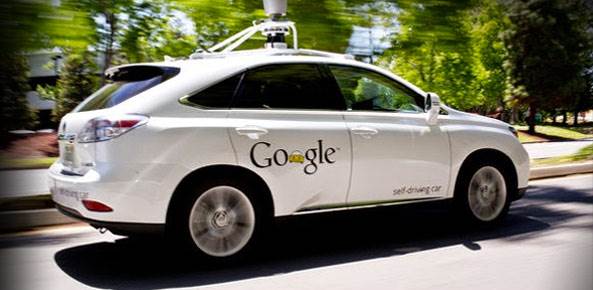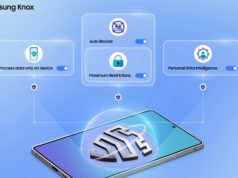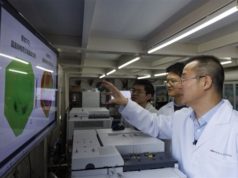
Google — which has been working on its self-driving cars since 2009 — is not in the car-making business. Nope, Google is in the superhuman-driver-making business, according to Dmitri Dolgov, the company’s head of self-driving technology.
Driving is a social activity, Dolgov told Recode during a live walkthrough of the technology on Google’s self-driving car. That means that the car has to not only be able to detect and recognize humans and other objects, it also has to be able to interact with, understand and react to their behavior.
To that end, the company’s self-driving software has developed to be able to detect and understand things like hand signals — a uniform method of symbolic communication that pedestrians and human drivers often use on the road — and react appropriately. So, when a bicyclist, for example, signals left using his or her hand, the car will react as a (generous) human might.
For Google, developing an ideal driver also means creating a suite of sensors and software that can be used to drive everywhere, no matter the make or model of the vehicle.
“It doesn’t matter,” Dolgov said. “We’re building a driver. We’ve been on Prius, Lexus; we have our own prototype, and we’re now working with Fiat Chryslers on a new platform.
“As far as the software is concerned, it’s the same thing,” he continued. “It’s like you getting into another car. You get a rental – maybe it’s a little bit bigger, and it doesn’t quite handle the same way as your own car – it takes you time to get used to, but the core tasks transfer.”
Unlike a human driver, however, Google’s cars use a combination of maps and long-range laser and regular radars that enable the car to see at least 100 meters around it, while also knowing what turns, traffic lights and roads to expect well before it detects them.
The cars also communicate with each other via the cloud. While humans can’t automatically download driving experience from a more experienced driver, robot cars learn new skills as soon as one car learns it.
That, of course, opens up the risk of hacking – a risk Google took into account from the inception of the project. Dolgov described how, to prevent hackers from being able to access all of the cars connected to each other, Google engineers separate the interface that cars use to communicate from the one that is used to control the car.
“We limit the amount of information that can be shared, and how that affects other cars,” Dolgov said. “If you have complete control of one vehicle, maybe you can create a construction zone that doesn’t actually exist in the world, but that’s the extent of it. There’s no way to control the local driving behavior.”
© 2016 Re/Code under contract with NewsEdge. -.







